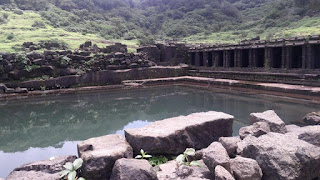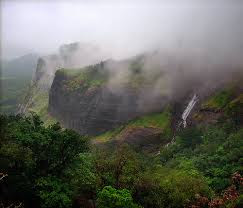Leh
– A Paradise on Earth
Few
places in India are at once so traveller-friendly and yet so enchanting and
hassle-free as mountain-framed Leh. Leh is the heart of the Leh district and
capital of Ladakh in the state of Jammu and Kashmir, India. Leh is located in
the Indus river valley at a crossroads of the old trading routes from Kashgar,
Tibet, and Kashmir. Its importance as a trading town slowed down with the
partition of British India, and ended with the closure of the border in 1962
during the Sino-Indian war. Since opening to tourists in 1974, it has become a
bustling tourist town, with large numbers of Kashmiri traders.
It's
a small town, easy to get most places by foot. The old town is a compact area
of mud brick houses and narrow lanes directly to the east of Main Bazar.
Changspa is the agricultural "suburb" northwest of the center, with
many guesthouses.
The
main Bazaar's elevation is 3505 meters, so take it easy on your first few days
there or risk possible altitude sickness. Even experienced high altitude
travellers (Andes) might have some trouble.
District
Leh is situated roughly between 32 to 36 degree north Latitude and 75 to 80
degree East longitude and altitude ranging from 2300 mtrs to 5000 mtrs above
sea level. District Leh with and area of 45100 Sq. Kms. makes it one of the
largest District in the country.The District is bounded by Pakistan occupied
Kashmir in the west and China in the North and eastern part and Lahul Spiti of
Himachal Pardesh in the south east. It is at a distance of 434 Kms from State
capital Srinagar and 474 Kms from Manali (HP).
Topographically,
the whole of the district is mountainous with three parallel ranges of the
Himalayas, the Zanskar, the Ladakh and the Karakoram. Between these ranges, the
Shayok, Indus and Zanskar rivers flow and most of the population lives in
valleys of these rivers.
Leh
has a cold, arid climate with long, harsh winter season that is, from October
to early March. The winter temperature in Leh dips down at maximum to -29
degree Celsius and during summers the mercury rises to a high of 33 degree
Celsius.
Best
places to visit in Leh:
- Pangong Lake
Pangong
lake is one of the most popular places to visit in Leh and is located just 160
kilometers away from Ladakh. The drive to Pangong lake is an exciting
experience offering scenic views. It is a beautiful lake with crystal blue
waters blessed with pleasant weather throughout the year.
Enjoy
the solitude near the placid waters of this magnificent lake and take out your
cameras to capture the picturesque view of this wonderful place. Black necked
Siberian can be spotted near the Mahe marshes, the only breeding place for
these rare migratory birds.
- Tso Moriri Lake
Drive
to the beautiful Tsomoriri lake from Leh taking around 6-7 hours is a thrilling
and adventurous experience as the last 60 Kilometer journey is on rugged paths.
It is beautifully placed in the secluded Rupshu valley.
- Lamayuru Trek
It
is the most ancient, royal and interesting located at a distance of 125
kilometers from leh. It is picturesquely enveloped by the rugged, dusty
mountains and is beautifully carved out of the badland area. It
comes in your way when you move towards Kargil from Leh. Drive on the road
towards Lamayuru is an excellent way to explore the scenic snow capped
mountains of the region. Tso Moriri is one of the must see places to visit in
Leh.
- Magnetic Hill
One
of the places to visit in Leh is the Gravity hill having strong magnetic
properties which can pull cars uphill and make Aircrafts go higher in terms of
altitude so that they could bypass magnetic interference. Due to this amazing
effect, millions of people from all over the world are attracted towards this
place.
- Nubra Valley
Trekking
on the rocky, colossal trails of this valley is a truly exciting experience as
it is situated near the banks of the pure nubra river. The
valley is named as “the valley of flowers” and it has some of the most
beautiful, vibrant and colourful flowers set amidst lush green landscape. This
place is popular because of its serene and tranquil ambience.
- Diskit Gompa
It
is the most ancient and largest gompa located near the Nubra valley. The golden
Buddha statue which is 32 meters tall is worth seeing. It is located 120
kilometers away from Leh.
Shanti
Stupa. It
is a white domed sacred shrine situated on a hammock in Leh. It is indeed a
masterpiece of royal, ancient beauty. The astonishing Buddha statues, holy
books and holy relics are sealed here for future generations. It was built as a
monument to celebrate 2500 years of Buddhism.
- Shey Monastery
Shey
monastery is famous because of the magnificent metal statue of Buddha and one
of the places to visit in leh , the second largest statue in Ladakh. It is
located 15 kilometers south of Leh. It was built in the year 1655 by Ladakh’s
king Deldan Namgyal. The royal kings of Ladakh used to stay here during
summers.
- Kargil
The
Ladakh district lies near LOC having Kashmir valley towards south and
Gilgit-baltistan towards west. It is situated 234 kilometers west of Leh. It is
a perfect place for camping at night before moving forward your journey to
explore other attractive places around Leh.
- Khardungla Pass
Situated
at an altitude of 5359 meters, it is the second highest motorable pass in the
district of Leh. The drive from Leh towards this pass is a fun-filled
experience yet scenic experience. The word Khardungla signifies the “pass of
lower castle”. The above ten were some of the best places to visit in Leh.
Here
are 10 best things to do in Leh:
- A Visit to Ancient Monasteries
The
monasteries talk about the rich culture and history of Ladakh. Some of the most
beautiful statues of Lord Buddha are
present here. The Gompas are a sacred place for the Buddhists and are worth
visiting.
- Go on a Camel Safari
Camel
safari is a great way of traversing the colossal valleys of Ladakh wrapped up
in the lap of nature surrounded by the magnificent hills and green landscape,
this should be included in list of things to do in Leh.
- Go on a Jeep Safari
An
enthralling jeep safari on the scenic landscape of Ladakh is absolutely fun and
exciting. If you have to travel several miles, then the best way is to hire a
Jeep which will make your journey relaxing and comfortable.
- Visit to Drass Valley
Popularly
called as the “Gateway of Ladakh”, it is the second coldest destination around
the world that is inhabited. Keep your
sweaters, gloves and jackets ready before you visit this beautiful chilling
place.
- Go Mountain Climbing
Something
to be included in things to do in Leh list is mountain climbing. Leh and the
surrounding regions in Ladakh is a haven for mountain climbers with its unique
charm and natural beauty. Hiring a local guide or sherpa is highly recommended
before venturing out to conquer the mountains.
- Cycling
Cycling
on the rocky trails of this beautiful place is a unique experience which you
will remember throughout your life. Thrillophilia has organized a number of
cycling tours in this region which takes cyclists along scenic paths.
- Motor Biking
Hire
a bike and hit the road of Leh and explore the surrounding regions. Riding
around this region is a truly hair raising experience.
- Trekking
Talking
about adventure activities in Leh ladakh, you can’t afford to miss trekking on
the rocky and arduous slopes of the Himalayan ranges enclosed by thick dense
forests and lush green landscapes. Thrillophilia organizes a number of treks in
Leh from June to February every year. This is one of the things to do in leh ,
that would make your trip a splendid one.
- Ice Skiing
Enjoy
Ice Skiing on the high and long snowy slopes of the Himalayan mountain ranges
and make your vacations truly memorable.
- Paragliding
Fall
free with the cool breeze blowing across your hair, experience the view of the
clear sky, the snow capped peaks and the huge green landscape adorned by
rivers. This region offers some of the best views for those thinking of
paragliding in Leh.
Paragliding
shows you the best of beautiful Leh, hence including this in your things to do
in Leh becomes inevitable.
What’s
special about Leh?
Leh
redefines tranquillity, serenity and it makes you feel as if you have entered a
paradise away from the city life where you can forget everything else and
simply enjoy every moment that you spend here. It has an interesting unique
culture and a visit to ancient monasteries lets you explore some of the most
beautiful Buddhist statues, relics and holy books.
You
must try out the scrumptious and mouth watering Tibetan delicacies. You can
purchase the Handicraft and art items designed by the local people for your
home sweet home as well as your loved ones because they can’t be found anywhere
else.
Rich
Culture and History: It has a unique unexplored history and the actual
residents of this region are still a mystery. Some of the known races include
Tibetan, Brokpa and Mon.
People
of Ladakh and their Customs: The population of Ladakh mainly consists of
Buddhists along with some percentages of Christians, muslims and hindus. The
ladakhi people are very warm and welcoming. They have a rich culture and the
Ladakhi dress is absolutely attractive and alluring.
Ladakhi
Food: You must taste the typical ladakhi food which tastes similar to the
Tibetan food. The must try delicacies of the Ladakh region include Tsampa and
Thupka.
Art
and Handicraft: The art and handicraft items are extremely creative and
beautiful. They are believed to be originated from local tribes. Ladakhis are
generally talented and creative due to the customs and traditions which have
been passed from generations. Ladakh is extremely popular for painting,
Pashmina shawls and metal sculptures.
Festivals
of Leh:
Ladakh is a land of several vibrant and colourful festivals celebrated
by the monks and local people. The native people celebrate these festivals as
per the Buddhist calendar. In order to explore the rich culture of this place,
you must participate in the Hemis festival and Ladakh festival.
- Hemis Festival
This
festival is celebrated to honour the birth of the guru Padmasambhava, the
founder of tantric Buddhism in Tibet. This festival is celebrated annually in
the month of June or July.
- Losar Festival
It
is celebrated in the 11th month as per Tibetan calendar which is 2 months ahead
of New year.
- Ladakh Festival
Held
during the initial weeks of September, It is a unique and a colourful festival
which includes stunning ceremonial costumes and amazing mask dances paraded by
troupes along the lanes of Leh.
Shopping
at Leh: Visiting
the local market of Leh is an excellent way of interacting with the locals and
learning about their tradition and customs. Besides, a visit to the local
market allows you to purchase unique items such as semi precious stones,
pearls, tribal jewellery, organic products and local handicrafts.
Pashmina
Shawls: Every
woman would love to add the graceful, beautiful and fine pashmina shawl to her
wardrobe. It is made up of cashmere wool which comes from pashmina or
changthangi goat. The pashmina goat can be spotted in the high altitudes of
Himalayan ranges.
Prayer
Wheels: It
is a spiritual item which consists of a cylindrical wheel mounted on a spindle
made up of coarse cotton, Leather, stone, wood and metal.
Buddhist
Relics: It
is believed that these relics that are original parts of lord Buddha’s body
still exist which includes the much talked about sacred relic of his tooth.
























































